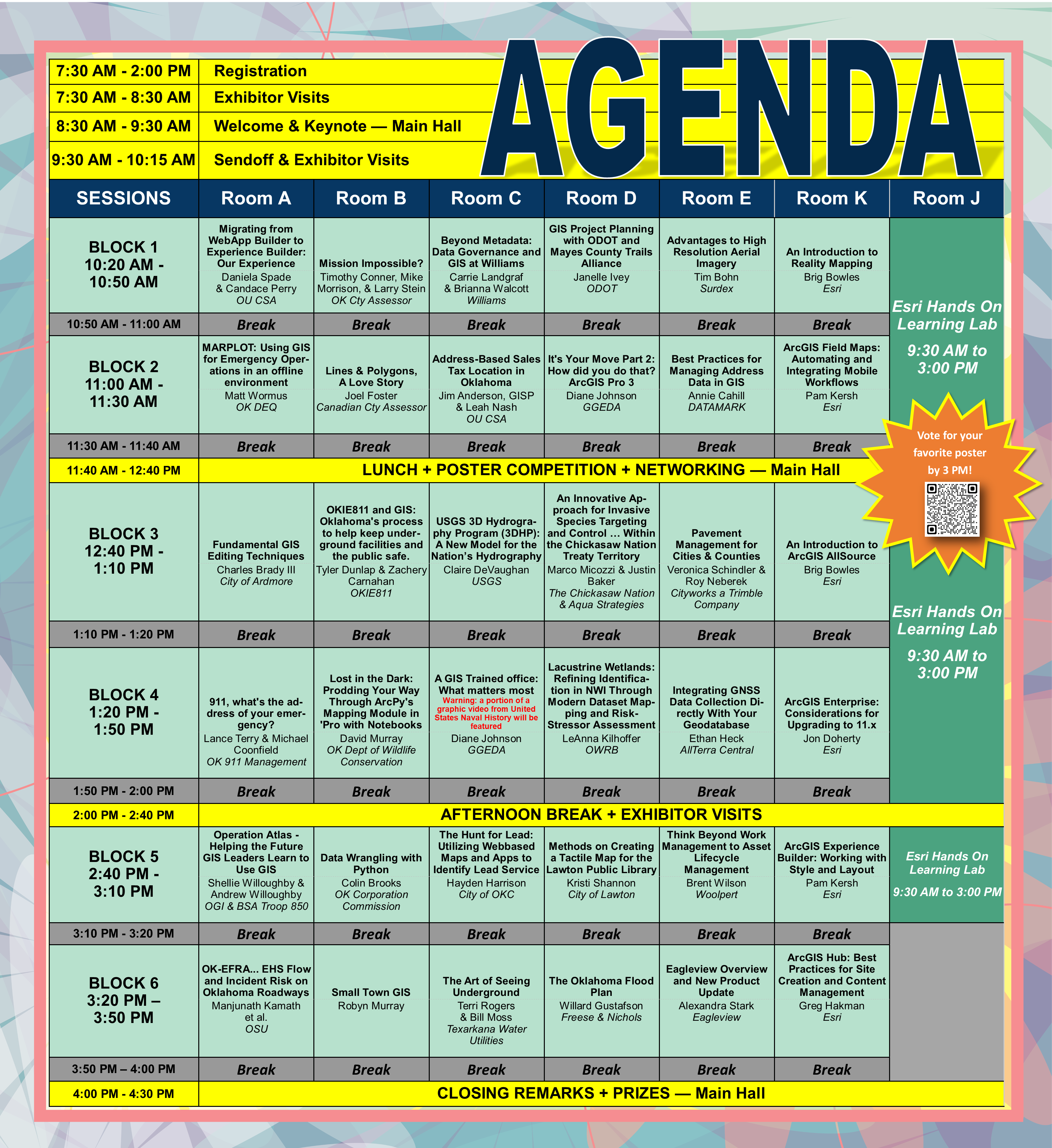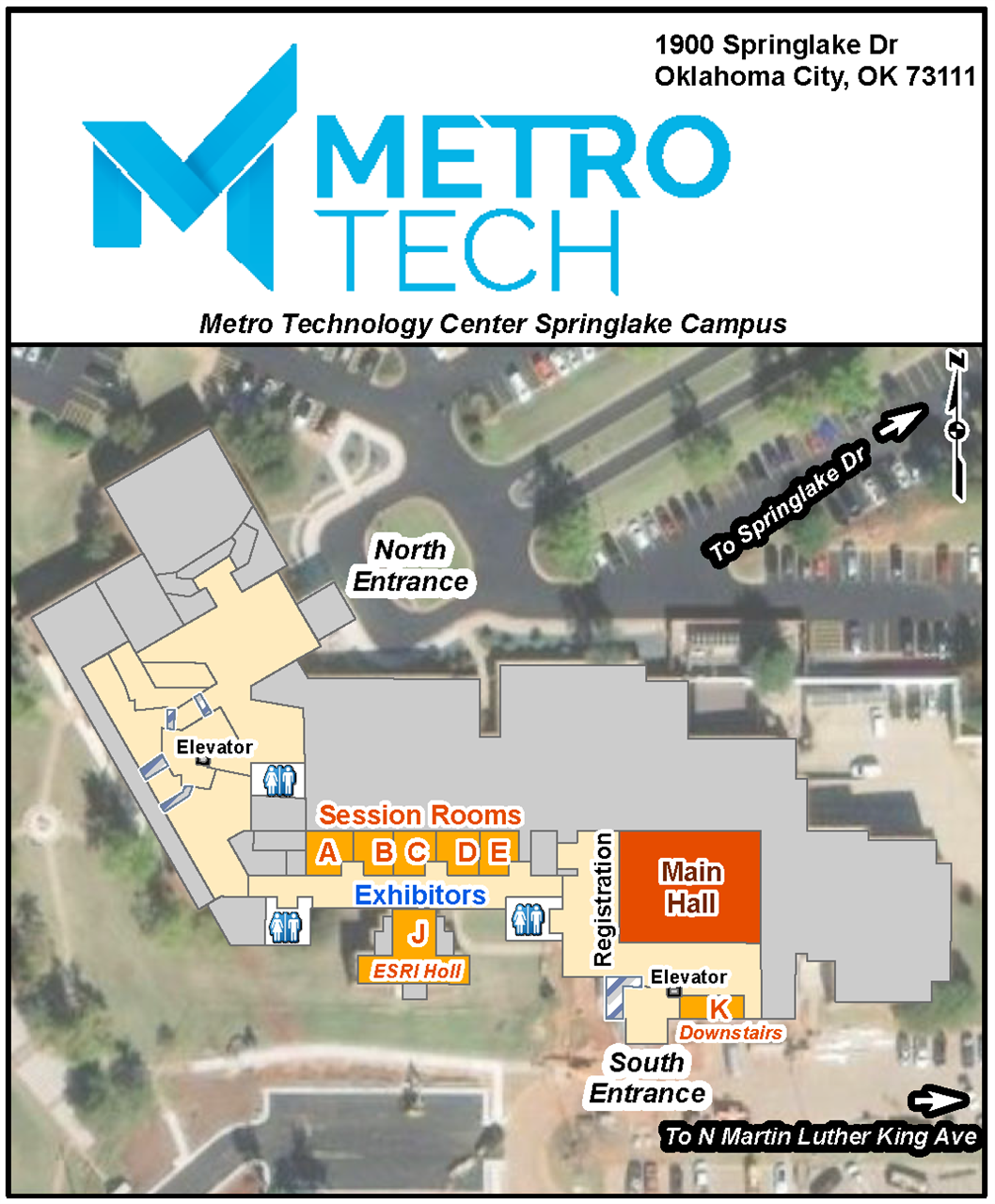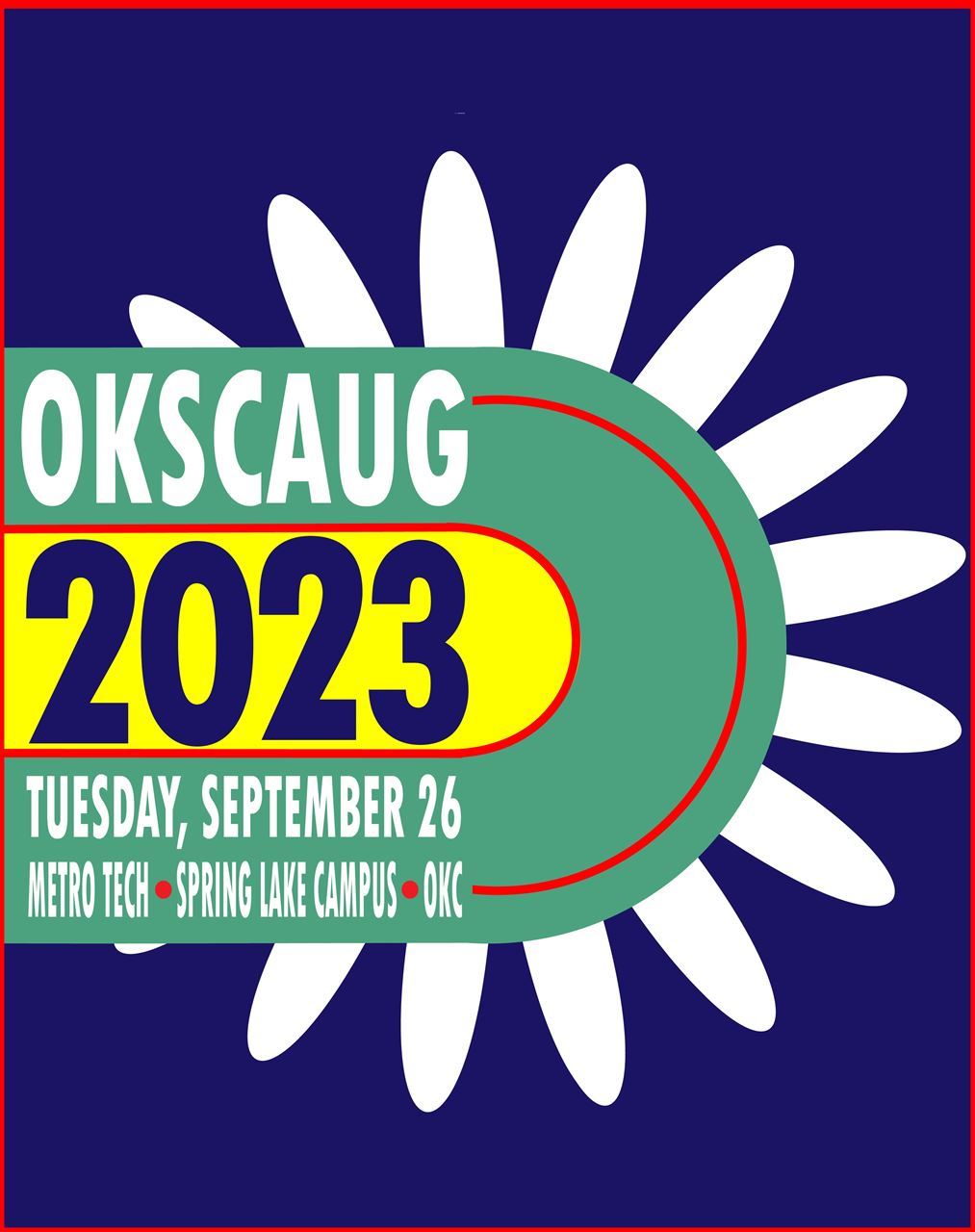



 |
Migrating from WebApp Builder to Experience Builder: Our Experience Daniela Spade & Candace Perry OU Center for Spatial Analysis In February of 2023, Esri announced the retirement of ArcGIS Web AppBuilder, with the recommendation of migrating WebApps to Experience Builder. The developer team at the Center for Spatial Analysis shares their experience migrating our Apps from WebApp Builder to Experience Builder in anticipation of Web AppBuilder’s eventual retirement. The team shares their insights, challenges faced, and tips & tricks gained while navigating the customizable interface that Experience Builder provides. | Mission Impossible? Timothy Conner, Mike Morrison, & Larry Stein Oklahoma County Assessor's Using Geolocation services such as Open Streeetmaps Premium the Assessor's Office is able to identify new Businesses at a rapid pace. Something that use to take hours upon hours has now be reduced to min with the help of Geolocators. One key use for this program has also been identifying all medical marijuana in Oklahoma County. This provides our field staff with vital information when going out into the field and we are also able to pick up additional businesses each year. Is this really an impossible task? Come see for youself! | Beyond Metadata: Data Governance and GIS at Williams Carrie Landgraf & Brianna Walcott Williams Knowing about your data and having consistency across many different software applications is key to success in any organization where interoperability and resource constraints abound. At Williams, GIS is a critical application for disseminating standardized information across the company. Our GIS and Knowledge Management teams partnering together are key to the success of our overall data governance program. |
GIS Project Planning with ODOT and Mayes County Trails Alliance Janelle Ivey Oklahoma Department of Transportation ODOT and the Mayes County Trails Alliance have been coordinating planning efforts to efficiently mitigate the future trails system for the Mayes County communities. GIS Data and Story maps have been very effective to show the need for collaboration on this project. |
Advantages to High Resolution Aerial Imagery
Tim Bohn Surdex Corporation We are surrounded by higher resolution imagery more and more every day. As an example, the state of Oklahoma is being flown for NAIP at 30cm (1 foot) gsd in 2023 whereas in years past it was 60cm or even 1m. With this data comes improved horizontal accuracy and better clarity on features for derivative products. While NAIP might not meet all your needs, it can serve as a great baselayer and serve as a step towards a custom program. Come learn more about free access to this public domain data and how you can participate in the future as a buy-up partner and get data customized to your specifications. Got feedback? Email the presenter(s)! |
 |
MARPLOT: Using GIS for Emergency Operations in an offline environment Matt Wormus Oklahoma Department of Environmental Quality Oklahomans are used to the vast extremes of weather and emergency situations. But what happens when you need to respond to an event geospatially, but there is no internet? MARPLOT is a tool utilized by those responding first to bridge this gap after an event. Learn how MARPLOT is used to respond to extreme events and day to day operations. | Lines & Polygons, A Love Story Joel Foster Canadian County Assessor's Office Parcel Fabric in ArcMap used a model in which each parcel polygon was made up of and related to its own set of lines. With Parcel Fabric in ArcGIS Pro, this is no longer the case. The Canadian County Assessor’s Office has a need to maintain the relationship between polygons and lines that create them but this change in the Parcel Fabric model is a challenge to maintaining that relationship because lines can now be shared among parcels creating a many-to-many relationship. Many-to-many relationships can be tricky to implement. This presentation will cover the in-progress solution developed for this problem which includes details on working with many-to-many relationship classes and working with the “shape” Python object in ESRI feature classes that could have uses outside parcel data. | Address-Based Sales Tax Location in Oklahoma: CSA's Reflections on 20 Years of State Partnership and Data Jim Anderson & Leah Nash OU Center for Spatial Analysis In 2023, the OU Center for Spatial Analysis (CSA) celebrates 20 years in partnership with the Oklahoma Tax Commission (OTC) providing for technology and products related to Oklahoma's status as a Streamlined Sales and Use Tax Agreement (SSUTA) Full-Member State. In this presentation we share the highlights of our work with OTC as a historical narrative and quantitative interpretation with a series of data visualizations/maps. The story draws on personal CSA staff experiences, longitudinal tax rate information, growth and decline in statewide delivery addressing, and an heirloom table reflecting the several million CSA Tax Rate Locator Website searches logged by the Public. Please join us in recounting the history, impact and future for this partnership in public service. |
It's Your Move Part 2: How did you do that? ArcGIS Pro 3 Diane Johnson Grand Gateway Economic Development Association Presidential Policy Directive 8's National Preparedness Goal of 2011 to prepare for incidents addresses the core capabilities of prevention, protection, mitigation, response, and recovery. While digitizing a map of Chincoteague Island in the Chesapeake Bay as a gift for a friend, I discovered washover of the barrier island of Assateague. A DEM was added to determine elevation and vulnerability as well as asking the question, how will coastal populations adapt to the effects of climate change. | Best Practices for Managing Address Data in GIS Annie Cahill DATAMARK Addressing is used across the government enterprise to support a number of applications and business needs. In this session we will discuss common ways of managing address points using GIS including tips and tricks for placement methodologies and attribute management. We will also explore best practices for public safety, and how to leverage the State of OK NG9-1-1 GIS Toolkit for address management. |
 |
Fundamental GIS Editing Techniques Charles Brady III City of Ardmore Regardless of the GIS software you use there are editing techniques that, when utilized correctly and in conjunction with one another, can greatly increase the accuracy of your data and the efficiency by which you edit it. We will briefly explore some of these techniques that span beyond any specific software or professional application of GIS. Whether you are reading and drawing from legal descriptions, updating your PSAP’s ESZ polygons to topologically match your street centerline network, breaking down a section correctly, or drawing in accurate subdivisions in from orthophotos with no ground control there are professional techniques that you can universally integrate into your everyday workflow to make your time spent more productive and accurate. | OKIE811 and GIS: Oklahoma's process to help keep underground facilities and the public safe Tyler Dunlap & Zachery Carnahan OKIE811 You have probably seen the different color flags and paint on the ground to mark where underground facilities are. But how do they get there? During this presentation we will talk about the 811 processes for the State of Oklahoma, show how locate request are created, and demonstrate the OKIE811 Service Area Editor tool that owners and operators of underground facilities use to manage the areas where they need to be notified of excavation. We are a not-for-profit corporation that focuses on safety, damage prevention and quality of service. Just remember Click Before You Dig, It's The Law! | USGS 3D Hydrography Program (3DHP): A New Model for the Nation’s Hydrography Claire DeVaughan U.S. Geological Survey The U.S. Geological Survey (USGS) National Geospatial Program (NGP) provides foundational digital geospatial data representing the topography, natural landscape, and manmade environment of the U.S. and is in the process of establishing the 3D Hydrography Program (3DHP) to modernize the mapping of the Nation’s inland waters. High-resolution lidar elevation data have been collected across much of the conterminous US through the 3D Elevation Program (3DEP). This data will be used as the source to derive a positionally accurate and detailed stream network. 3DHP is the first systematic remapping of the Nation’s hydrography since the original topographic mapping program that was active between 1947 and 1992. By using modern acquisition, validation, and data management techniques, 3DHP will enable analysis and visualization for a broad range of applications. This presentation will provide information on 3DHP, and on partnerships and data acquisition needed to support 3DHP. |
An Innovative Approach for Invasive Species Targeting and Control Using Remotely Sensed Data and Techniques Within the Chickasaw Nation Treaty Territory Marco Micozzi & Justin Baker The Chickasaw Nation & Aqua Strategies Eastern redcedar (ERC), Juniperus virginiana, is increasing in density and range, negatively affecting both agricultural productivity and water recharge of aquifers and surface water bodies. Prescribed fire has proven to be a very effective tool in slowing this growth, but this method is less effective on very sparse or very dense, well-established stands. This project uses an innovative approach to optimize efforts to identify and clear ERC within the Chickasaw Nation (CN) treaty territory and will create a system by which land parcels can be efficiently prioritized for cedar clearing. By applying this methodology, the CN will be able to restore productivity of agricultural ranchland more quickly and economically, while also improving water quality, availability and aquifer recharge conditions. The long-term goal of this project is to provide positive impacts to landowners and water systems and potentially provide a tool that can be applied in other parts of the country. | Pavement Management for Cities & Counties Veronica Schindler & Roy Neberek CItyworks a Trimble Company Cities and counties all have to deal with pavement management issues and identifying the optimal mix of projects to meet their agency's performance goals and maximize ROI with a limited amount of budget. Learn how Pavement Express can help manage your streets and sidewalks and how it integrates with Cityworks for work order management thereby enabling your agency to create value within your organization. |
 |
911, what's the address of your emergency Lance Terry & Michael Coonfield Oklahoma 911 Management Authority Oklahoma passed new legislation that funds Next Generation 911 (NG911) in the State of Oklahoma. For several years we have been building to this point and preparing our GIS data to meet the needs of NG911. This course will bring everyone up to speed on the States timeline and include a snapshot of where we are at and what needs to happen to be successful. | Lost in the Dark: Prodding Your Way Through ArcPy's Mapping Module in 'Pro with Notebooks https://odwc.maps.arcgis.com/home/item.html?id=f031984d740142d58dcb012c35f45cc3 David Murray OK Dept of Wildlife Conservation Inspired by a previous OKSCAUG presentation demonstrating the capabilities of Notebooks in ArcGIS Pro using only the standard installed Python environment, this Session follows the Presenter's Path in puzzling out ArcPy's Mapping Module using ArcGIS Pro's Notebooks ...with a Goal of Automatic Publication-ready Atlas Creation. Most suited to those with a Very Basic understanding of Python and little-to-no Developer Experience. Copies of the slides will be available, as well as extra notes from the presenter. | A GIS Trained office: What matters most ( A shameless plug for SCAUG and ESRI training) Diane Johnson Grand Gateway Economic Development Association An office staff that understands what GIS is and knows how to access the data in case of an emergency is a well prepared staff, able to divert further disasters. Training is important. |
Lacustrine Wetlands: Refining Indentification in NWI Through Modern Dataset Mapping and Risk-Stressor Assessment LeAnna Kilhoffer OWRB Understanding the role and extent of Oklahoma’s wetlands is critical to both the management and protection of these vital resources. This project is aimed towards updating and increasing the accuracy of the National Wetlands Inventory (NWI) and its associated public online viewer, the NWI Wetlands Mapper, by using current remote sensing datasets and determination of gain or loss of lacustrine and palustrine wetlands. Key outcomes are the creation of enhanced/current maps of lacustrine wetlands adjacent to gauged reservoirs in Oklahoma including areal determination and Cowardin classification, as well as performing a qualitative risk assessment of lacustrine wetlands identified. These efforts provide the opportunity to further aid lake managers and policy makers by visualizing extent of wetland communities present and the effect of changing lake elevations in relation to maintaining those wetland communities. | Integrating GNSS Data Collection Directly With Your Geodatabase Ethan Heck AllTerra Central Trimble Terra Office ArcGIS Plug-in creates seamless integration with GIS workflows, making the exchange between the field and office effortless. This presentation will showcase how workflows within the plug-in interact with your geodatabase and why it is a must for increasing productivity. |
 |
Operation Atlas - Helping the Future GIS Leaders Learn to Use GIS Shellie Willoughby OK Office of Geographic Information Operation Atlas is the Eagle Scout project of a local Scout in BSA Troop 850. The Scout approached me with the idea of using GIS to help map the Veterans in a local cemetery. This presentation will discuss the project along with the steps a GIS Professional can use to help students gain access to GIS software, teach them the concepts of GIS and encourage them to think outside box. | Data Wrangling with Python Colin Brooks Oklahoma Corporation Commission Have you ever wanted to take full advantage of Esri’s Dashboards and Apps but your data is stuck in Excel and flat files? Not to worry, you can wrangle that data with the help of Python and a few helpful data management libraries. Here I’ll present step-by-step how to use Pandas for Python, some database connectors, and a couple of other libraries to import data, manipulate some fields and datatypes, and write the resulting data out for use with GIS. Next, we’ll use ArcPy to do some spatial analysis and ArcGIS API for Python to publish data to our Portal. Lastly, we’ll look at a few examples of the outputs in a Dashboard to see the results with Esri’s fantastic visualizations. | The Hunt for Lead: Utilizing Web-based Maps and Apps to Identify Lead Service Lines in the City of Oklahoma City Hayden Harrison City of Oklahoma City The Utilities Department within the City of Oklahoma City has developed a program to identify harmful lead service lines across the City. In 2022, GIS staff completed a desktop study to identify possible lead lines in residential and commercial areas. In June of 2023, the City launched a pilot program to pothole 2,125 homes and businesses. The pilot program utilizes the ESRI Lead Service Line solution for Enterprise Portal. This presentation will demonstrate how the Utilities Department uses Field Maps and other web-based mapping applications to track lead lines throughout the pilot program. |
Methods on Creating a Tactile Map for the Lawton Public Library Kristi Shannon City of Lawton GIS Division "All maps lie flat, and all flat maps lie," but some lay a little less flat than others. Tactile maps are maps that can be read by touch, usually for those who are blind or seeing impaired. While these maps take on many formats to provide users with information about their surroundings, they usually have one element in common: raised vectors. Tactile maps improve situational awareness for those who are blind or visually impaired by using braille and 3D points, lines, and polygons. Since these maps are intended to be read by touch, the level of detail is less complex. Generalization of symbology, detail, and scale are three of the more challenging components to tactile cartography. Although not a novel idea, tactile maps are not common in municipalities in SW Oklahoma. The intent of this presentation is to show how a tactile map was created for the Lawton Public Library and to provide insight on the capability of any organization to provide tactile maps for their community. | Think Beyond Work Management to Asset Lifecycle Management Brent Wilson Woolpert Explore Asset Lifecycle Management using Trimble Owner and Public Sector (O&PS) solutions. The solutions can help your organization from design and build to operating and maintaining. Trimble O&PS solutions are made up of Cityworks, e-Builder, and AgileAssets. Go from a permitting process in Cityworks to a construction process in e-Builder, on to the operations and maintenance process back in Cityworks and AgileAssets. You might end up where you started with designing the next upgrade to your assets and your Strategic Asset Management Plan all in a single company solution set called Trimble ALM. The Woolpert Strategic Consulting team has the knowledge and experience to help you build out your Strategic Asset Management Plan with our Institute of Asset Management-certified employees who can help you achieve your organizational goals, utilizing over 25 years of experience and partnership with Trimble and Cityworks. |
 |
OK-EFRA: An ArcGIS® Web Application to Visualize EHS Flow and Incident Risk on Oklahoma Roadways Manjunath Kamath, Dr. Diana Rodriguez Coca, Dr. R. Scott Frazier, Timman Nyamagoudar, & Felipe Carreno Urquijo Oklahoma State University This presentation includes a demo of the OK-EFRA application, an overview of the ongoing research project that supports its development and deployment, and some representative use cases to illustrate the application of this tool in practice. OK-EFRA’s purpose is to inform LEPCs, first responders, and other local bodies in Oklahoma counties as to what dangerous materials may be transported on county roads and highways with an assessment of incident risk to serve as input to their emergency preparedness planning activities. The source data was collected by the OSU research team through an online survey of facilities in the state that store extremely hazardous substance (EHS) on site and send and/or receive such EHS materials on a regular basis. The OSU research team developed mathematical models to estimate the EHS flow, EHS incident risk, and risks related to health, fire, and instability/reactivity for Oklahoma roadways. | Small Town GIS Robyn Murray How to build layer that shows zoning by parcel using disparate data layers. Included skills:
Next steps:
Included skills:
Challenge: By using a different projections (StatePlane), the basemap cannot be used in AGOL | The Art of Seeing Underground Terri Rogers & Bill Moss Texarkana Water Utilities Using aerial imagery with water utilities can be challenging, especially if the utility assets are underground. With aerial images we are able to identify the above ground assets which extrapolate location of underground assets. This helps us with our legacy data and new data to make sure our GIS is as accurate as possible when it comes to location and asset management. We use the oblique photography to measure and inspect our water tanks. |
The Oklahoma Flood Plan: Using an ArcGIS Online Collaboration to Streamline Project Development and Delivery. Willard Gustafson Freese and Nichols Have you ever wondered how to seamlessly share data between organizations in real time, or how to enable external teams to build Maps and Applications within your AGOL organization without using up your own Named Users? ArcGIS Online Collaborations are the answer! Join us as we discuss how OWRB, Freese and Nichols, and Meshek leveraged a Partner Collaboration in AGOL to build and configure maps and applications for the Oklahoma Flood Plan directly within OWRBs ArcGIS Online Organization. | Eagleview Overview and New Product Update Alexandra Stark Eagleview EagleView (formerly Pictometry) is an industry-leading technology company that produces high-resolution geo-referenced aerial imagery. The imagery is captured with patented camera systems attached to fixed-wing aircraft resulting in more detail than satellite imagery and greater coverage than drone imagery. EagleView provides both orthogonal (top-down, 90-degree angle) and oblique (bird’s eye, 40–50-degree angle) imagery, providing multiple views of a location, including the ability to rotate 360 degrees around buildings and structures. The imagery is imbued with data and insights, meaning everything visible in the imagery can be analyzed, measured, and used to inform decisions. Data can be delivered on a physical drive or hosted remotely. EagleView is a Gold Esri Partner and EagleView's platform integrates seamlessly with popular programs including Esri ArcGIS, CAMA systems, and E911 systems. Got feedback? Email the presenter(s)! |

